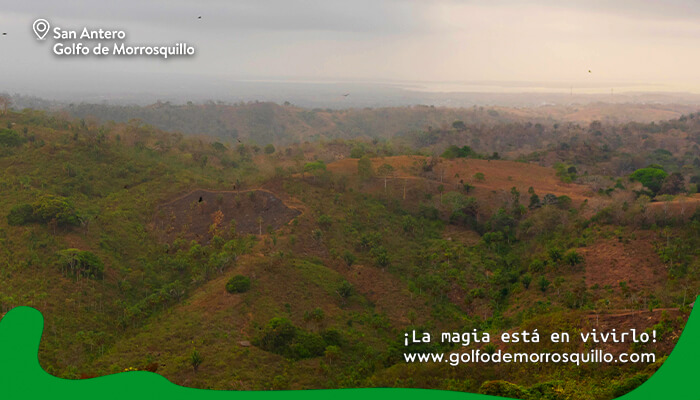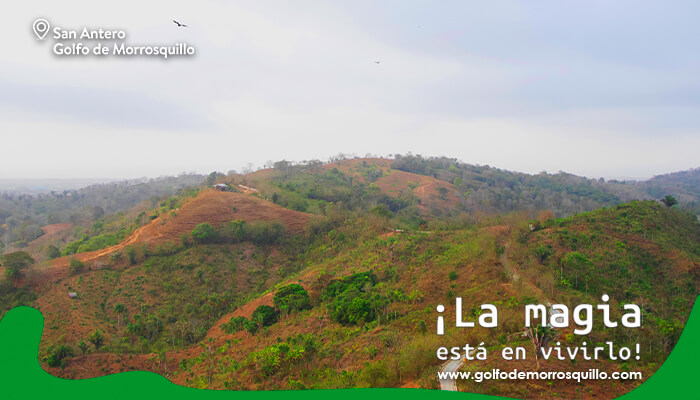The imposing hills located in the municipality of San Antero, served as a guide to identify the territory for the Spanish, they called it Golfo de los Morrosquillos, hence this place bears its name with honor. San Antero, on the other hand, is a municipality located in the magical Gulf of Morrosquillo in the north of the department of Córdoba in Colombia, which currently has an impressive 11,513 hectares of five species of mangroves.
Do you recognize Alonso de Ojeda?
He was the first Spaniard to step on the beautiful bay of Cispatá, in 1499, then in 1501 Don Rodrigo de Bastidas arrived directing a great expedition to determine the characteristics of the area, here he discovered the mouth of the Sinú River, in the year 1534 the troops of don Alonso de Heredia, lieutenant governor and older brother of don Pedro de Heredia, founder of Cartagena.
Two fully identified populations made up the municipality of San Antero today, these were San Antero and Sitio de Lobos, the latter town was extinct as a result of the thousand-day war.
At the time of the conquest, the Spanish built a fort in the magical bay of Cispatá, as it is the mouth of the Sinú River, giving entrance to the Finzenú indigenous territory, of the Zenú Family, where the aborigines dedicated themselves to working gold in filigree. from his town.
For this reason Don Alonso de Heredia, brother of Pedro de Heredia, founder of Cartagena, undertakes the conquest of this territory, motivated by the greed of Gold, his fight was cruel and almost in vain because the cacica Totó, defended her territory with blood They only managed to defeat her by making her fight against another woman who was brought by the Spanish, Doña Francisca Batista, in this way they were able to loot almost all the gold that was found in this territory.
Many years later, in the middle of the 20th century, the archaeologist Gerardo Reichel-Dolmatoff and his wife carried out an investigation (Momil I and Momil II) in what is now the town of Momil, more especially in Cerro del Mohán, a place where They found gold and archaeological remains of a pre-Columbian indigenous culture dating back to 1000 BC. C to 500 AD. Discoveries that the Republic of Colombia currently has in the National Museum and that thanks to these, San Antero has an important role in the history of both the country and America.
That day, Carabaño showed a courage beyond all evidence, as well as some other Venezuelan officers who accompanied him and gave no quarter to any of the prisoners, many victims were sacrificed by Spain in hatred of freedom. Once this support point of the Sinú revolutionaries was pacified, the other places once again recognized the government and tranquility was restored.
The second event occurred in the midst of the War of the Supremes (1839-1842). Where the terrible strategy of the insurgent troops, and the poor disposition of the government would plunge Cartagena into economic misery, preventing the entry of exports and imports, in the face of this the British government would try to take advantage of this situation of public disorder; On November 19, 1841, the British government, supported by government troops, produced an encounter that was decisive in the Bay of Cispatá, producing 59 deaths, leaving 23 wounded and about 200 prisoners, causing a great revolt among the civil population. Cartagena, which would lead General Tomas Cipriano de Mosquera to suppress what remained of the navy.
In 1916, with national and international assets and after overcoming some setbacks and obstacles in the Congress of the Republic, construction began on The Packing House, in Cispatá Bay (Coveñas, Sucre). In 1919, more than 600 workers were building aqueducts, roads, houses and a modern dock. The facilities were completed in 1926, with a total investment of 1,600,000 American gold pesos.
Another important manufacturing event in the agro-industrial sector was the installation of a tannery factory near Cispatá Bay, by the Italo-Colombian Tanning Society, however, this company did not last for many years. On March 14, 1801, Humboldt and Bonpland left Cuba for Panama, but fate in the form of bad weather led him to Cispatá, on March 24 he arrived at the port of Cispatá, with the ship damaged by storms, remaining there until the 30th, which is when they arrive at the walled city, the beautiful Cartagena de Indias.



Comments
Please login to comment and rate